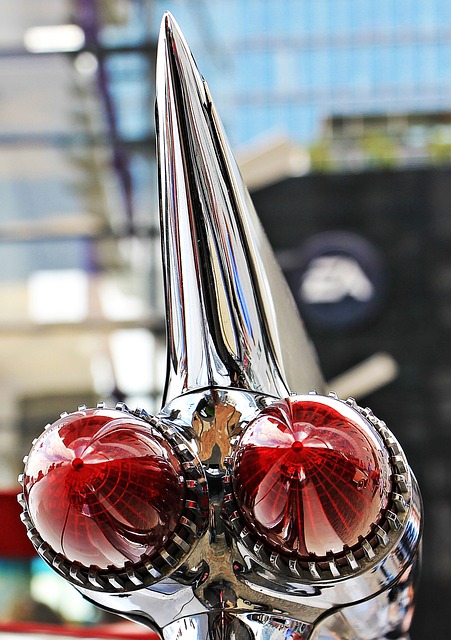Looking to register your car in California? This comprehensive guide walks you through the entire process, from understanding key requirements to obtaining your registration certificate and license plate. We cover essential steps like gathering necessary documents and undergoing DMV VIN verification to ensure a smooth experience. By following these clear instructions, you’ll be on your way to legal and safe driving in no time.
- Understand California Car Registration Requirements
- Gather Necessary Documents for DMV Visit
- Perform Vehicle Identification Number (VIN) Verification
- Complete Application and Pay Fees at DMV
- Receive Your Registration Certificate & License Plate
Understand California Car Registration Requirements

Before registering your car in California, it’s crucial to understand the state’s specific requirements. The California Department of Motor Vehicles (DMV) mandates that all vehicles operated within the state be properly registered and have undergone a vehicle identification number (VIN) verification process. This involves ensuring the VIN on the car matches the one reported to the DMV.
During the registration, you’ll need to present valid documents such as proof of ownership, a current insurance card, and a completed application form. Additionally, many residents opt for a mobile vin verifier or conduct a vin inspection to streamline this process, as it’s essential to have all paperwork in order to avoid any delays or issues with vehicle registration.
Gather Necessary Documents for DMV Visit

Before visiting the DMV to register your car in California, it’s essential to gather all necessary documents for a smooth and efficient process. One crucial document is the Vehicle Identification Number (VIN) verification report. This can be obtained through a mobile VIN inspection or by visiting a DMV office that offers this service. The VIN is a unique identifier for your vehicle, making it an integral part of the registration process.
Additionally, you’ll need to bring along proof of insurance, a valid driver’s license, and the title or lienholder information if applicable. For a mobile VIN verification, ensure you have all these documents readily available on your phone or printed out. This preparation will save time and help navigate the DMV process with ease.
Perform Vehicle Identification Number (VIN) Verification

Before proceeding with the registration process, it’s crucial to perform a Vehicle Identification Number (VIN) verification. This step is essential as it ensures that your car’s details match the information on record with the California Department of Motor Vehicles (DMV). A mobile vin verifier or a professional vin inspection can cross-check the VIN number against state databases to verify its authenticity. By doing so, you safeguard against potential fraud and ensure that all documents associated with your vehicle are in order.
The DMV vin verification process is designed to be straightforward. You’ll need to provide key details about your car, including its make, model, year, and VIN number. A mobile vin verifier can assist by scanning the VIN from your car’s registration or title document, streamlining the entire verification procedure. Once the information matches, you’re one step closer to completing the registration process successfully.
Complete Application and Pay Fees at DMV

To register your car in California, the first step is to complete the necessary application at the Department of Motor Vehicles (DMV) office or online. You’ll need several key documents and information on hand, such as proof of identity, ownership of the vehicle, and current insurance. Once your application is filled out, it’s time to move onto the fee payment process. The DMV requires a variety of fees depending on the type of registration and vehicle you have. Be sure to inquire about any additional charges, like those for a mobile vin verifier or VIN inspection, which might be required based on your specific circumstances.
After completing the application and paying the associated fees, including any costs related to a mobile VIN verification or inspection, you’ll receive your vehicle’s registration documents. It’s crucial to double-check all information for accuracy before leaving the DMV office or submitting your application online. Properly registering your car is not only a legal requirement but also ensures that you and other drivers on California’s roads are protected by up-to-date insurance and safety standards.
Receive Your Registration Certificate & License Plate

After completing the registration process at the DMV, you’ll receive your Registration Certificate and a set of license plates. This is a crucial step in ensuring your vehicle’s legal status on California roads. The certificate confirms that your car has passed all necessary inspections and is compliant with state regulations.
The license plate, featuring a unique California VIN (Vehicle Identification Number) verification, is a key component for identifying your vehicle during mobile vin verifier or even a simple vin inspection. Remember to display these plates prominently on your vehicle at all times, as they serve as a constant reminder of your car’s official registration and help authorities quickly verify its status should the need arise.
Registering a car in California involves understanding state requirements, gathering essential documents, and completing a straightforward process at the Department of Motor Vehicles (DMV). After performing a crucial dmv vin verification using your Vehicle Identification Number (VIN), you’ll need to fill out an application, pay relevant fees, and wait for your registration certificate and license plate. Following these steps ensures your vehicle is legally registered and ready to hit California’s roads.



